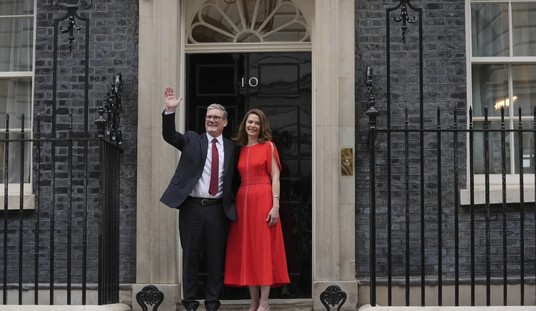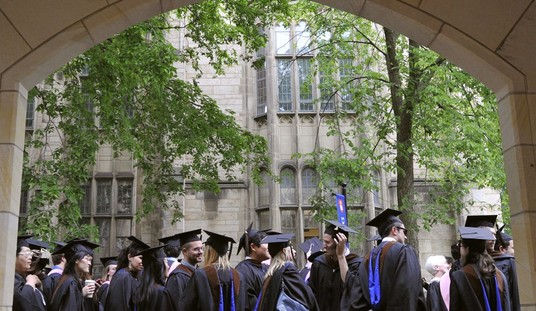If the US economy has stopped its rebound, it must have happened more recently than June. While weekly jobless claims remain in seven-figure territory, indicating tremendous churn in the job market, the numbers are still declining, albeit incrementally now. For the week ending on July 11, initial claim numbers dropped by 10,000 to 1.3 million.
However, the number of those receiving paid benefits dropped sharply for the second week in a row, emphases mine:
In the week ending July 11, the advance figure for seasonally adjusted initial claims was 1,300,000, a decrease of 10,000 from the previous week’s revised level. The previous week’s level was revised down by 4,000 from 1,314,000 to 1,310,000. The 4-week moving average was 1,375,000, a decrease of 60,000 from the previous week’s revised average. The previous week’s average was revised down by 2,250 from 1,437,250 to 1,435,000.
The advance seasonally adjusted insured unemployment rate was 11.9 percent for the week ending July 4, a decrease of 0.3 percentage point from the previous week’s revised rate. The previous week’s rate was revised down by 0.2 from 12.4 to 12.2 percent. The advance number for seasonally adjusted insured unemployment during the week ending July 4 was 17,338,000, a decrease of 422,000 from the previous week’s revised level. The previous week’s level was revised down by 302,000 from 18,062,000 to 17,760,000. The 4-week moving average was 18,272,250, a decrease of 737,750 from the previous week’s revised average. The previous week’s average was revised down by 75,500 from 19,085,500 to 19,010,000.
That decrease puts the decline in paid benefits over the last couple of weeks somewhere around 1.6 million claimants. The four-week average has dropped from 19.29 million to 18.272 million, reflecting that drop and making it clear that it’s not a statistical fluke. That’s a massive shift off of the government program that hasn’t been given much attention by the media.
Even better, the program specifically aimed at COVID-19 relief also sees its new-claim numbers sharply falling off, even though the program will continue until the end of the month:
New unemployment claims in state programs last week fell for another week to 1.3 mill — a decrease of 10,000 from the week prior.
New Pandemic Unemployment Assistance claims saw a larger dip last week — falling to 928,488, a decrease of 117,945 https://t.co/cHeTMlnggR
— Rebecca Rainey (@RebeccaARainey) July 16, 2020
These numbers look less and less like flukes, and more like a trend. That trend also appears in retail numbers, which rose significantly for the second straight month. While the types of sales has changed significantly, overall retail sales have almost returned to a pre-COVID normal:
Retail sales climbed 7.5 percent in June after a sharp rebound in May, the Commerce Department said Thursday, as federal stimulus checks and tax refunds continued to fuel a burst of summertime spending at newly reopened stores and restaurants. …
The June data followed a May jump that was the largest monthly surge on record, even before it was revised up to 18.2 percent — but that had followed two months of record declines. While overall sales are within 1 percent of where they were in February, that figure masks major shifts that have taken place in what people are buying and whether they are shopping from home.
In June, categories like restaurants and bars, electronics and appliance stores and clothing and clothing accessories saw jumps, but still tumbled overall from a year earlier. There was also a surge in spending for sporting goods and books, with sales in that category increasing 27 percent from May. Grocery stores experienced a slight decline in sales, as people started to eat more meals outside their homes. Spending on motor vehicles increased from May and was up from last year.
There is still plenty of room for pessimism on the economy, especially as high-population states reimpose restrictions on in-person commerce. That is likely to have a sharp effect later this month, which means that the metrics reported in August are not likely to be as good. Congress appears ready to extend the PPP and some of the other employment support programs that have thus far prevented a total economic meltdown and allowed for the retail rebound. They might also curtail the expanded unemployment benefit, which could incentivize more workers to return to jobs in August. That might mitigate some other furloughing, depending on the necessity of bending curves downward on hospitalizations.
For the moment, though, all of these indicators — save that top-line figure on initial jobless claims — are pointing to recovery and growth. It will take careful management of the pandemic, and perhaps a return to school, in order to keep that momentum rolling. For now, however, this is better news than the media has made of it.








